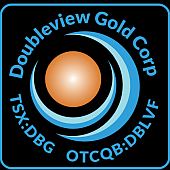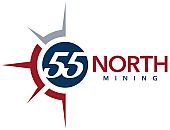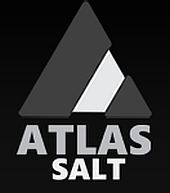 Inflection resumes phase II drilling at Duck Creek
Inflection resumes phase II drilling at Duck Creek
2024-10-03 12:08 ET – News Release
Mr. Alistair Waddell reports
INFLECTION RESOURCES PROVIDES DRILLING UPDATE FROM PHASE II DUCK CREEK EXPLORATION PROGRAM IN NEW SOUTH WALES
Inflection Resources Ltd. has provided an update on its phase II exploration program in New South Wales, Australia, conducted under an exploration agreement with AngloGold Ashanti Australia Ltd. announced on June 14, 2023.
Summary highlights:
- Drilling has recommenced on the phase II Duck Creek project following an eight-week hiatus to compile analytical results and model all data for improved vectoring of drill holes. Prior to the hiatus, four additional deep drill holes totalling 2,822 metres (m) were completed.
- Drill holes DCKDH018, 019 and 020 were drilled to test ambient noise tomography (ANT) anomalies and hole DCKDH021 tested a separate large gravity anomaly.
- Hole DCKDH020 intersected the strongest hydrothermal alteration of all holes at Duck Creek and the entire New South Wales exploration program, with large intervals of intense pyrite mineralization associated with a monzodiorite intrusion which coincides with a velocity high in the ANT data.
- Hole DCKDH020 intersected significant magnetite alteration and veinlets along with elevated arsenic geochemical values (40 parts per million (ppm) arsenic (As)), which are considered highly significant by the company as similar levels of anomalism are reported in close proximity to other alkalic porphyry systems in New South Wales and elsewhere.
- Several stepout drill holes in proximity to DCKDH020 are currently under way.
Alistair Waddell, Inflection’s president and chief executive officer, states: “We are very excited by the intense hydrothermal alteration and sulphide mineralization intersected in drill hole DCKDH020 which is the most intense alteration of all drill holes completed in the entire New South Wales program to date. We are particularly excited as the hole was designed to test an ANT target that coincides with a distinct magnetic high and broad gravity low which are key features we specifically use for targeting. The intersection of altered monzodiorite intrusions in this hole, along with tourmaline and magnetite veinlets associated with highly anomalous arsenic values, is considered very encouraging as these features are often found proximal to other alkalic porphyry systems in New South Wales. We look forward to completing the next round of phase II drill holes, which are currently stepping out from hole DCKDH020.”
Phase II drilling
Four phase II targets at Duck Creek have been tested with mud rotary drill holes and diamond-core tails for a total of 2,822 m to test high and low velocity ANT anomalies and a zone of low Bouguer gravity. Drill hole DCKDH020 was drilled to the east with a dip of minus 70 degrees to a depth of 850 m and tested an approximate 300-metre-times-420-metre zone of elevated seismic velocity evident in the ANT data interpreted to represent an intrusion at depth. DCKDH020 intersected the strongest hydrothermal alteration of all holes at Duck Creek and the entire New South Wales program since inception. The hole intersected 401 m of postmineral, sedimentary cover sequence followed by basement comprising a thick sequence of variably epidote-chlorite altered andesitic volcanic rocks with hematite-bearing inner propylitic alteration. Intruding the volcanic pile are intensely pyritic, hematite reddened, hornblende-phyric monzodiorites with strong alteration, which implies pre- to syn-alteration timing for intrusion emplacement. Veinlet and disseminated pyrite commonly occur along with disseminated and veinlet magnetite, with epidote and tourmaline often associated with quartz-calcite veins. The association of intense tourmaline alteration combined with disseminated and veinlets of magnetite suggests possible proximity to a porphyry source for the hydrothermal fluids.
Results from a downhole geophysical survey reported zones of relatively high sonic velocity associated with competent intervals of monzodiorite, which supports the hypothesis that intrusions are likely to manifest in the ANT data as zones of elevated seismic velocity. Additionally, the survey demonstrated localized areas of low sonic velocity associated with more intense hydrothermal alteration, which also supports the interpretation that low seismic velocities evident in the ANT survey can represent zones of hydrothermal alteration.
Assay results returned for the hole indicate a broad zone of elevated copper (Cu) (max 788 ppm) with values generally increasing downhole. Intervals of elevated Au (max 0.051 ppm) and pathfinder elements including molybdenum (Mo) (max 29.8 ppm), arsenic (As) (max 212 ppm) and bismuth (Bi) (max 16.2 ppm) suggest fertile hydrothermal fluids. Arsenic values average 43.9 ppm over 448.5 m from the top of the hole starting at the unconformity to the end of the hole. These values are considered highly anomalous as 200 m to 500 m from the Cadia Ridgeway orebody (Newmont Corp.) reports arsenic in the 20 ppm to 30 ppm range and copper in the 200 ppm to 300 ppm range.
Hole DCKDH020 is being followed up with a number of stepout drill holes to explore for a possible porphyry source for the favourable alteration and geochemical data. Drilling is under way.
Drill hole DCKDH018 was drilled to a depth of 740 m to test a discreet, finger-like zone of elevated seismic velocity evident in the ANT data. The hole was drilled at a dip of minus 70 degrees toward 295o and intersected basement at 431 m which comprised an intercalated sequence of volcaniclastic sediments with andesites. The sequence exhibits weak chlorite alteration and does not satisfactorily explain the feature identified in the ANT data. The company is working to better understand the ANT anomaly although the specific target has been downgraded. Assay results for this hole reported low tenor values.
Drill hole DCKDH019 was drilled to a depth of 564 m at a dip of minus 70 degrees toward 264 degrees to test a northeast-trending zone of reduced seismic velocity evident in the ANT data. The ANT target was interpreted to be indicative of alteration associated with a large fault zone. The hole intersected basement at 398 m which comprised volcaniclastic conglomerate and andesite intruded by monzonite intrusions. These are locally cut by sericite-carbonate bearing fault zones which appear in the ANT data as linear seismic velocity lows. No significant mineralization was intersected and assay results reported low tenor values.
Drill hole DCKDH021 was drilled to a depth of 666 m at a dip of minus 70 degrees toward 180 degrees to test a northeast-trending gravity low, interpreted to represent an intrusion at depth. The hole intersected basement rocks at 407 m which comprise an intercalated sequence of volcaniclastic conglomerate with andesite, intruded by small monzonite dikes. The hole did not intersect a large intrusion as modelled, which would have explained the gravity low. It is now postulated that this gravity low is the manifestation of a larger batholith at depth, which is bleeding off smaller intrusive dikes. The hole reported low tenor values.
Phase II Duck Creek exploration program
AngloGold Ashanti elected to designate the company’s Duck Creek exploration licence as a phase II project as part of the exploration agreement announced on June 14, 2023.
As part of phase II at Duck Creek, AngloGold Ashanti retains the right to earn an initial 51-per-cent interest in the project by investing $7-million (Australian) in exploration expenditures. Upon completion of phase II, AngloGold Ashanti retains the additional right, as part of a phase III program, to earn up to a 65-per-cent interest by investing a further $20-million (Australian) in expenditures. Upon completion of phase III, AngloGold Ashanti retains the right to earn up to a 75-per-cent interest by completing a prefeasibility study with a minimum two-million-ounce gold or copper-gold equivalent resource (measured and indicated category) and ceding a 2-per-cent or 1-per-cent net smelter return (NSR) royalty to Inflection. Inflection is operating phases I and II and is receiving a 10-per-cent management fee for doing so. See Inflection news release dated June 14, 2023, for further details.
 |
Qualified person and sampling quality control
The scientific and technical information contained in this news release has been reviewed and approved by Carl Swensson (FAusIMM), a qualified person (QP) as defined in National Instrument 43-101 (Standards of Disclosure for Mineral Projects).
Drilling is being conducted using a truck-mounted multipurpose drill rig. Mud rotary drilling is utilized to drill through the cover sequence before transitioning to diamond drilling using NQ-sized core at the unconformity. Core is logged at the company’s field office, photographed and marked before being cut to the company’s specified sample intervals. Half-core samples are placed in bags with internationally certified blanks and standards inserted. Samples are dispatched to ALS Laboratories in Orange NSW, an accredited analytical laboratory meeting ISO/IEC 17025:2005 and ISO 9001:2015. Samples are prepared by crushing and grinding through ALS methods CRU-21 and PUL-32, respectively. The pulps are then assayed for 48 elements through ALS method ME-MS61 using a 25-gram sample after a four-acid near total digest with an ICP-MS (inductively coupled plasma mass spectrometry) finish. Gold is assayed by fire assay using ALS method Au-AA23 using a 30-gram sample charge and AAS (atomic absorption spectrometry) finish. Laboratory standards and QA/QC (quality assurance/quality control) are monitored by the company. Coarse rejects from the sample preparation are subjected to spectral analysis.
About Inflection Resources Ltd.
Inflection is a technically driven copper-gold focused mineral exploration company.
We seek Safe Harbor.
https://inflectionresources.com/






























